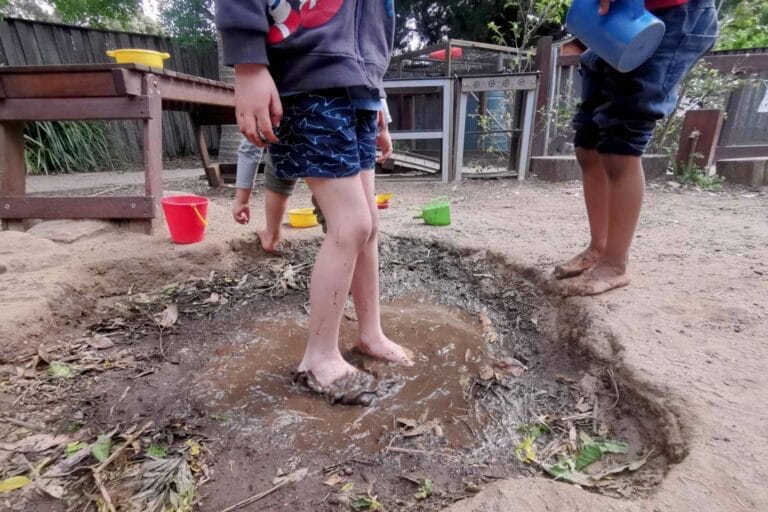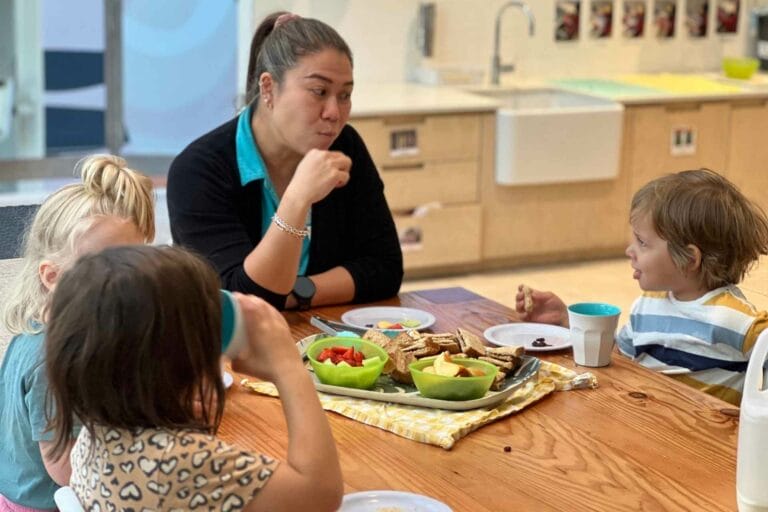4 drowning prevention tips with Kidsaver

“20 seconds and a few centimetres of water is all it takes’
Drowning is 100% preventable. So we asked Tara Eid from Kidsaver to give us her top drowning prevention tips. In Australia, 22 children aged 0-4 years die from drowning, on average, each year and is it estimated that a further 200 young children suffer long-term disability from non-fatal drowning. Young children are at high risk of drowning.
Young children are naturally curious, active and eager to explore their surroundings, and they are attracted to water. It shines, ripples, splashes, and can even make things float! However they are too young to understand that water can be dangerous, and they don’t know what to do when they get into trouble. So it is up to us as their parents, to protect them from water hazards in and around our home or when out and about.
Drowning doesn’t look like what most of us imagine – there’s no splashing, no screaming, no calling for help. Drowning in young children is quick and absolutely silent.
It’s not just the beach, ponds, dams, rivers and public swimming pools that pose a risk. There are many hidden drowning risks in and around your home that we may not think about beyond our backyard pool. Inflatable/portable pools, bathtubs, buckets, toilets, pet bowls, pot plants or sand pits that fill with water after rain, eskys … in fact, anything that can hold just 3cm of water poses a drowning risk – enough to cover your little one’s nose and mouth if they fell in. They do not need to be completely submerged.
What can we as parents do to keep our children safe in and around water?
1. Supervise
Almost all deaths from drowning involving children, are due to a lack of or lapse in adult supervision. We must actively supervise children around water. This is the single most important thing you can do to keep your child safe. Eyes on. Hands-on. Focus all your attention on children all of the time, when they are in or around water, this includes the bath. Any distraction is dangerous, whether it be reading a book, using a phone, or social media use or carrying out everyday tasks like taking the rubbish out, putting the washing on the line or answering the doorbell. No task is worth your child’s life.
2. Restrict
Restrict your child’s access to water. Check pool fences. Check there is nothing your child can climb onto, to gain access to the water. Ensure older siblings do not go in and out of the pool area without supervision, little ones can easily follow them without their knowledge. Check inflatable/portable pools are empty when not in use, check the backyard after rain – portable sandpit, buckets, empty pots, can easy fill with water creating a drowning risk.
3. Teach
Teach children water safety skills. Make sure your child grows up, water aware, water familiar and water confident. Children can start swimming lessons as early as 4 – 6 months of age.
4. Respond
Learn how to respond in case of an emergency. Many children are alive today because their parents knew how to perform CPR and responded quickly. Book yourself into a Kidsaver course where we will provide you with the skills and confidence you need to respond quickly and appropriately in a child drowning situation. Our classes are child-focused, hands-on and practical where you will learn the life-saving techniques that could one day help your own little one or perhaps someone else’s child.
Here is a summary plus more tips from Kidsaver to help keep your child safe around water in and around your home:
- EVER take your eyes off them in or around water – even kids who can swim can drown.
- Keep your children within arm’s reach at all times when in water.
- Tip out inflatable pools after use.
- Turn buckets, portable pools and sandpits upside down when not in use, to prevent these objects from filling with water after rain.
- Keep bathroom doors closed and toilet lid seats down, to act as extra barriers from your child getting near the toilet or bath unsupervised.
- Take the plug out of the bath as soon as your child gets out – and put it somewhere up high so they cannot reach it.
- Ensure pool fencing and gates are in good working order and meet all council requirements and Australian standards. Also, ensure there is nothing near your pool fence that can be dragged by a child up to the pool fence, to prevent them from climbing over the fence/high enough to reach the gate lock.
- Keep an eye on older siblings who may be entering or leaving the pool area and teach them to always ensure the gate is closed behind them, and no little ones have followed them in.
- Enrol your kids in swimming lessons early, and teach them rules around water.
- Don’t rely on inflatable devices such as pool noodles or floaties for safety.
We must remain vigilant around water, especially when there are little ones around. However, even if we do everything in our power to try and keep our little ones safe, sometimes accidents will still happen. This is why it is so important to ensure you know what to do in case of an emergency involving your little one. Know CPR, know baby & child First Aid. The time you invest in a Kidsaver class may save a life most precious to you.
We hope this article has helped prepare you to feel safer around water with your children. If you would like to find out more about our service you can book a tour or send us a message.

Written By
Written by Tara Reid, Kidsaver





